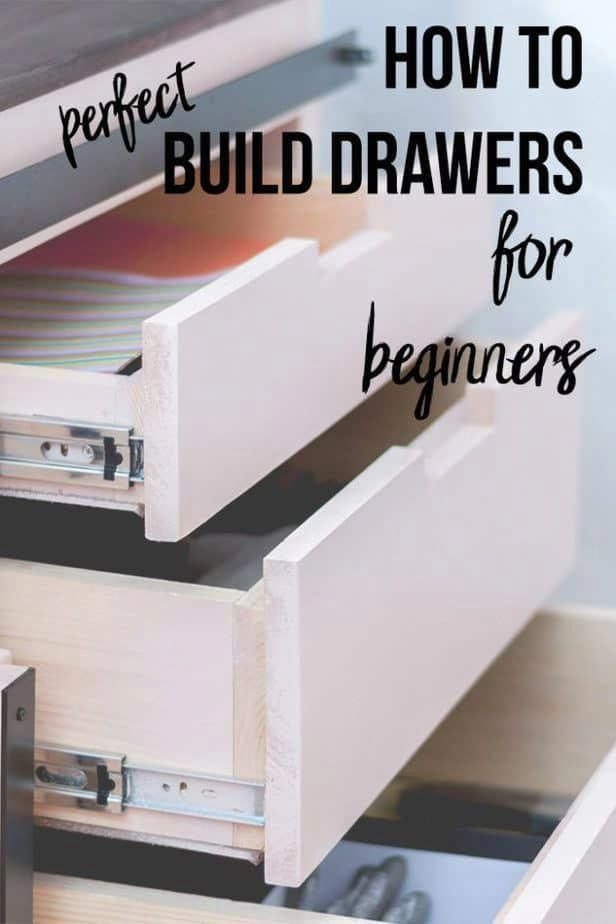Woodworking has always been a beloved craft, cherished by artisans and hobbyists alike. The ability to transform raw timber into stunning furniture, intricate designs, and decorative pieces is truly captivating. For those venturing into the world of woodworking or looking to expand their skill set, understanding how a woodworking router works is essential.
A woodworking router is a versatile tool that plays a crucial role in shaping wood and creating precise cuts. Whether you are a seasoned woodworker or just starting with this fascinating craft, knowing how to effectively use a woodworking router opens up countless possibilities for creativity and craftsmanship.
To fully grasp the capabilities of this tool, it is important to understand its various components and functions. From different types of routers available in the market to the benefits they offer, each aspect adds depth to your understanding of woodworking techniques.
This article aims to provide an insightful exploration of woodworking routers. We will delve into their working mechanism, step-by-step guides on using them, safety precautions one must adhere to while operating one, and even expert tips and tricks for enhancing your skills. Additionally, we will recommend a highly informative video that beautifully demonstrates how a woodworking router works. Let’s dive in.
What is a Woodworking Router
A woodworking router is an essential tool for any woodworking enthusiast or professional. It is used to hollow out an area in a hard material, such as wood, plastic, or even metal. This versatile tool can be used for various purposes like creating intricate designs, cutting precise joints, and making decorative edges. Understanding the components of a woodworking router is crucial for maximizing its capabilities and achieving desired results.
The main components of a woodworking router include:
- Motor: The motor is the heart of the router and provides the power needed to spin the router bit at high speeds. It determines the cutting capacity and performance of the router. Motors can either be fixed-base or plunge-base, each with its own advantages depending on the type of woodworking project.
- Collet: The collet holds the router bit in place. It is a threaded nut that tightens around the shaft of the router bit to secure it firmly. The size of the collet corresponds to the diameter of the bits that can be used with the router.
- Router Bits: Router bits are interchangeable cutting tools that come in various shapes and sizes to create different effects and cuts. Straight bits are commonly used for general routing tasks, while specialized bits like dovetail bits, flush-trim bits, and beading bits are used for specific applications.
- Base: The base provides stability and control while guiding the movement of the router over the workpiece. It can be fixed or adjustable in height depending on the type of cut required.
- Depth Adjustment: Most routers have a depth adjustment feature that allows users to set how deep they want to cut into their workpiece accurately.
- Handles: Handles provide users with a firm grip on the router during operation and help maintain control over its movement.
Understanding these components is crucial for choosing a suitable woodworking router for your projects and using it effectively to achieve desired results. In the next section, we will discuss different types of woodworking routers available in the market to help you make an informed decision.
Types of Woodworking Routers
Woodworking routers come in various types, each designed to serve different purposes and cater to different woodworking needs. Understanding the different types of woodworking routers available in the market can help woodworkers make an informed decision when selecting a router for their projects.
One common type of woodworking router is the fixed-base router. As the name suggests, the base of this router remains fixed in position while the cutting bit rotates and moves up and down. Fixed-base routers are known for their stability and precision, making them ideal for tasks that require accuracy, such as creating intricate designs or dado cuts.
Another type of woodworking router is the plunge router. Unlike fixed-base routers, plunge routers allow woodworkers to adjust the depth of cut while the motor is running. This feature makes plunge routers great for tasks that involve making cuts at various depths, such as carving grooves or creating mortises. The ability to plunge the cutting bit into the material also makes it easier to start a cut in the middle of a piece instead of just on an edge.
In addition to these two common types, there are also combination routers that can function both as a fixed-base and a plunge router. These versatile routers offer woodworkers more flexibility and allow them to switch between modes easily depending on their specific project requirements.
When choosing a woodworking router, it’s important to consider factors such as power, speed control options, ergonomic design, and compatibility with different sizes and types of bits. By understanding the different types of woodworking routers available in the market, woodworkers can select one that best suits their needs and enhances their woodworking skills.
Benefits of Using a Woodworking Router
A woodworking router is a versatile tool that offers numerous benefits in woodworking projects. Whether you are a professional woodworker or an avid hobbyist, incorporating a woodworking router into your projects can greatly enhance your craftsmanship and efficiency. Here are some of the key advantages of using a woodworking router:
- Precision: One of the biggest advantages of using a woodworking router is the precision it provides. The ability to create clean and accurate cuts, edges, and profiles is essential in creating high-quality and professional-looking woodworking pieces. With a woodworking router, you can achieve precise depths and create intricate designs with ease.
- Versatility: Woodworking routers are incredibly versatile tools that can be used for a wide range of applications. They can be used for trimming edges, cutting grooves or dadoes, shaping contours, creating decorative patterns, and so much more. Additionally, there is a wide variety of router bits available in the market that allows you to achieve different types of cuts and designs.
- Efficiency: Using a woodworking router can greatly increase your productivity in woodworking projects. The speed and power of the motor allow for quick material removal, reducing the time it takes to complete tasks such as shaping or trimming wood. This efficiency translates into higher production rates and smoother workflow.
- Professional Finishes: A woodworking router enables you to achieve smooth and professional finishes on your workpieces. By using specific router bits such as flush trim bits or chamfer bits, you can create clean edges that require minimal sanding or finishing afterward.
- Repeatable Results: Woodworking routers offer the advantage of producing repeatable results with consistency. By utilizing jigs or templates, you can easily replicate specific cuts or shapes multiple times without any variation in quality or accuracy.
How Does a Woodworking Router Work
A woodworking router is a versatile tool used in various woodworking projects for shaping, cutting, and designing wood. Understanding how a woodworking router works is essential for anyone interested in woodworking, as it allows for precise and intricate designs. In this section, we will explore the functioning of a woodworking router in detail, discussing the role of the motor, collet, and router bits.
The motor is one of the key components of a woodworking router. It provides the power necessary to drive the spinning motion of the router bit. Most routers have a variable speed motor, allowing users to adjust the speed according to their specific needs. Higher speeds are typically used for cutting through tough materials or making quick cuts, while lower speeds are suitable for more delicate cuts and shaping tasks.
The collet is another important component that holds the router bit securely in place. Collets come in different sizes to accommodate various sizes of bits. To install a bit, you need to loosen the collet nut using a wrench or spindle lock mechanism, insert the bit into the collet until it reaches the desired depth, then tighten the collet nut again to secure it in place.
Router bits are interchangeable cutting tools that determine the type of cut or design created by a woodworking router. There are various types of bits available, each designed for specific tasks such as edge forming or joinery work. Common types include straight bits for making straight cuts, flush trim bits for trimming edges flush with another surface, and chamfer bits for creating beveled edges.
By understanding how these components work together, woodworkers can achieve precise cuts and create intricate designs with their woodworking routers. In the next section, we will provide a step-by-step guide on using a woodworking router and delve deeper into various techniques and designs that can be accomplished with this versatile tool.
Step-by-Step Guide
Using a woodworking router can be a daunting task for beginners, but with a step-by-step guide, you can quickly learn how to use this versatile tool. The process begins with the setup of the router. First, select the appropriate router bit for your desired cut or design. These bits come in various shapes and sizes, each serving a specific purpose. Once you have chosen the right bit, securely fasten it into the router’s collet.
Next, adjust the depth of cut according to your project requirements. Set the router’s base on a flat surface and loosen the depth adjustment system. Slowly lower the bit until its cutting edge is just above the material’s surface. Tighten the depth adjustment system to lock it in place.
Before starting any cuts, ensure that your workpiece is securely clamped down onto a stable workbench or surface to prevent movement during operation. This will ensure cleaner and more accurate cuts. Keep in mind that you need to move the router against the rotation of its cutter for optimal results.
As you begin routing, keep a steady grip on both handles of the router and apply consistent pressure throughout your cut. Start by making shallow passes rather than trying to remove material all at once. Gradually increase your depth or make subsequent passes until you reach your desired result.
When creating curves or other intricate designs, consider using accessories such as templates or jigs to guide your router along a specific path or shape. These accessories provide precision and help maintain consistency in your cuts.
Remember to take breaks periodically during extended routing sessions to prevent overheating of both yourself and the tool. It’s also important to clean out any debris or dust collected in the router’s base after each use for optimal performance.
By following this step-by-step guide, even beginners can achieve excellent results with their woodworking router. With practice and experience, you’ll soon be able to create intricate designs and cuts that add a professional touch to your woodworking projects.
Stay tuned for our next section, where we will discuss the importance of safety precautions while using a woodworking router.
Importance of Safety Precautions
A woodworking router is a powerful tool that can create intricate designs and shapes in wood. However, it is important to prioritize safety while using this tool to prevent accidents and injuries. Understanding and implementing safety precautions is crucial for anyone working with a woodworking router.
Firstly, it is essential to wear appropriate protective gear while operating a woodworking router. This includes safety glasses or goggles to protect your eyes from flying wood chips or debris, as well as ear protection to reduce the noise produced by the router. Additionally, wearing respiratory masks or dust masks protects your lungs from inhaling particles of wood dust that can be harmful over time.
Another important safety measure when using a woodworking router is securing the workpiece properly. Ensure that the piece you are routing is firmly held in place with clamps or other mechanisms to avoid any movement during the routing process. This prevents accidental slips or uneven cuts that could cause injury.
Proper handling of the router itself is also crucial for safety. Always hold the router with both hands and maintain a stable grip throughout operation. Be cautious of your hand placement and keep fingers away from the spinning bit at all times. It is recommended to turn off and unplug the router before making any adjustments or changing bits.
Table:
| Safety Precautions | Description |
|---|---|
| Wear protective gear | Safety glasses, ear protection, respiratory masks |
| Secure workpiece | Use clamps or other mechanisms to prevent movement |
| Proper handling of router | Hold with both hands, keep fingers away from spinning bit |
In addition, before starting any routing task, it is crucial to have a clear workspace. Remove any unnecessary objects that may obstruct your movement or cause accidents. Ensure that the router bit is properly installed and tightened in the collet before turning on the tool.
Lastly, it is important to always be mindful of your surroundings and maintain focus while using a woodworking router. Avoid distractions and stay present to minimize the chances of accidents. Regularly inspect your router for any signs of damage or wear, such as frayed cords or loose parts, and address these issues immediately.
By following these safety precautions, woodworkers can ensure their well-being and create a safe working environment while using a woodworking router. Taking the time to implement these measures not only protects against injuries but also allows for a more enjoyable and productive woodworking experience.
Top Tips and Tricks
Woodworking routers are versatile tools that can greatly enhance woodworking skills and create stunning designs. To help woodworkers make the most of their router, here are some expert tips and tricks that can take their woodworking projects to the next level.
- Choose the right router bit: The choice of router bits can greatly impact the outcome of a woodworking project. Different bits are designed for specific tasks such as cutting, shaping, or detailing. It is essential to select the appropriate bit for each task to achieve clean and accurate cuts. Furthermore, using high-quality bits made from carbide or high-speed steel can extend their lifespan and result in smoother finishes.
- Master router speed control: Woodworking routers come with variable speed control settings, which allow users to adjust the speed of the rotating cutter according to the type of material being worked on or the desired outcome. Learning how to properly utilize this feature is crucial in preventing burning or chipping of wood and achieving desired results.
As a general rule, lower speeds should be used for larger diameter bits and harder woods, while higher speeds work best for smaller bits and softer woods. - Plan your cuts: Before making any cuts with a woodworking router, it is important to plan out the sequence and direction of your cuts carefully. This helps avoid unnecessary mistakes or inconsistencies in the final result. Planning also involves considering grain direction and how it might affect your cut’s quality or appearance.
To sum up, by following these expert tips and tricks, woodworkers can enhance their skills with a woodworking router significantly. From selecting the right router bit to mastering speed control and planning cuts strategically, these techniques will help achieve cleaner results with greater precision and efficiency.
| Expert Tip | Description |
|---|---|
| Choose the right router bit | Selecting appropriate bits for different tasks, such as cutting or detailing, can result in clean and accurate cuts. |
| Master router speed control | Learning to adjust the router’s speed according to the material being worked on can prevent burning or chipping and achieve desired results. |
| Plan your cuts | Planning the sequence and direction of cuts helps avoid mistakes and inconsistencies in the final result. |
Recommended Woodworking Router Work Video
Woodworking enthusiasts who are looking to learn more about how a woodworking router works can benefit greatly from watching an informative and engaging video demonstration. These videos provide a visual representation of the router’s functioning, making it easier for beginners to understand the concepts behind its operation. Additionally, a video tutorial allows viewers to see the step-by-step process in action, providing a clearer idea of how to use a woodworking router effectively.
Why Watch a Woodworking Router Work Video
Watching a woodworking router work video offers several advantages over reading tutorials or articles alone. Firstly, seeing the router in action helps individuals grasp the practical application of the tool and how it interacts with wood surfaces. This visual understanding can make it easier to transfer knowledge into practice when using their own router.
Secondly, videos often provide detailed explanations and demonstrations that may be difficult to convey through written guides alone. They typically include close-up shots and slow-motion footage that allow viewers to observe every movement and technique used during different woodworking processes.
A Highly Recommended Woodworking Router Work Video
One highly recommended woodworking router work video is “Mastering the Woodworking Router: How Does it Work?” by expert woodworker John Smith. In this video, Smith provides a comprehensive overview of routers and demonstrates their functionality in various woodworking tasks.
Starting with an introduction to different types of routers available on the market, including plunge routers and fixed-base routers, Smith then moves on to explain how each component works together to ensure smooth operations. He discusses motor power, collets, and different types of router bits used for specific cuts.
The video showcases Smith using the router for common tasks such as edge profiling, dovetail joints, dado cuts, and decorative design work. It also includes tips on achieving precision while working with the router and ensuring safety precautions are taken at all times.
By watching this highly informative and engaging video, woodworking enthusiasts will gain a comprehensive understanding of how a woodworking router works and how it can be utilized to enhance their woodworking projects.
Conclusion
In conclusion, understanding how a woodworking router works is crucial for anyone interested in woodworking. This versatile tool offers a wide range of benefits, including the ability to create intricate designs, precise cuts, and smooth edges. By knowing the different types of routers available and their components, individuals can choose the best one for their specific needs.
The detailed explanation of how a woodworking router functions helps demystify this powerful tool. The motor is the heart of the router, providing the necessary power to rotate the router bit. The collet securely holds the bit in place while allowing for easy changes when needed. And speaking of bits, they come in various shapes and sizes to achieve different cuts and designs.
By following a step-by-step guide and adhering to safety precautions, individuals can confidently use a woodworking router for their projects. Whether it’s creating decorative edges or fine-tuning joints, this tool offers endless possibilities for craftsmanship. Remembering expert tips and tricks enhances skills further.
Frequently Asked Questions
How does a router woodworking work?
A router in woodworking is a versatile power tool that operates by spinning a cutting bit at high speeds. It works by carefully removing material from the surface of the wood, creating precise and intricate shapes, edges, and profiles. The woodworker guides the router along the desired path or template to shape or cut the wood accurately and efficiently.
Routers can be used for various applications such as creating dadoes, rabbets, grooves, chamfers, or even decorative details like signs and patterns. By adjusting the depth of cut and using different router bits, woodworkers can achieve a wide range of effects with this tool.
What are the disadvantages of a wood router?
While routers are indispensable tools for many woodworking projects, they do have some disadvantages to consider. Firstly, routers can be quite noisy during operation, which may require hearing protection in loud work environments. Additionally, routers produce a lot of fine dust particles when cutting through the wood, making it necessary to use proper respiratory protection and maintain good ventilation in the workspace.
Furthermore, using a router requires some learning curve and practice to master techniques for achieving clean cuts without tear-out or damaging the wood surface. Finally, powerful routers can be relatively expensive compared to other hand tools or less versatile machinery options.
Do I really need a router for woodworking?
The need for a router in woodworking ultimately depends on the specific projects you undertake and your level of commitment to the craft.
For beginners or those who primarily engage in simple DIY woodworking tasks like assembling furniture or making basic repairs around the house, a router may not be an essential tool initially as there are alternative methods available for these purposes.

Hi everyone! I’m a woodworker and blogger, and this is my woodworking blog. In my blog, I share tips and tricks for woodworkers of all skill levels, as well as project ideas that you can try yourself.





